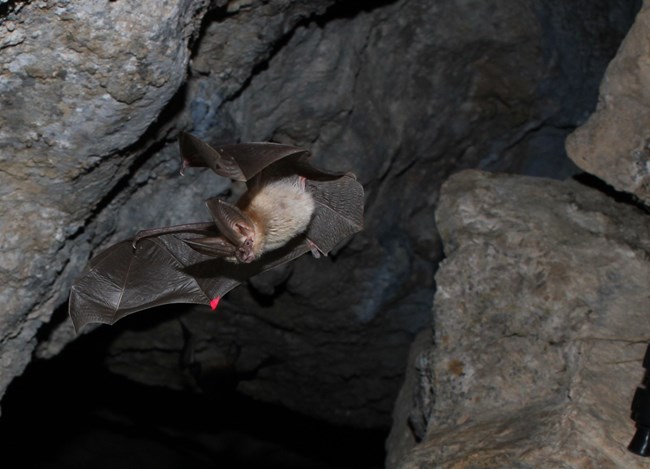Part of a series of articles titled The Midden - Great Basin National Park: Vol. 21, No.1, Summer 2021.
Article
Nevada Bat Plan
This article was originally published in The Midden – Great Basin National Park: Vol. 21, No. 1, Summer 2021.

NPS Photo by Bryan Hamilton
By Bryan Hamilton, Wildlife Biologist
On warm summer nights, vast numbers of bats fly above our heads. Bats are the only mammals capable of true flight and use high frequency echolocation calls to detect and capture insect prey. Because we can’t see or hear them, we are largely unaware of the incredible abundance of bats.All of the 23 species of bats found in Nevada feed on insects. Bat predation on insects in the United States is valued at $53 billion each year through reduced food costs, need for harmful pesticides, and disease risk from insect vectors such as mosquitoes! Therefore, protecting and conserving bats is extremely important for human health and the economy.
The Nevada Bat Conservation Plan was published in 2006 to guide bat conservation in Nevada. Since then we’ve gained new knowledge about bats and new threats to bat populations have emerged. White-nose syndrome (WNS), a fungal disease, has spread across North America in the last decade, killing millions of bats in its wake. Wind energy development has proved deadly to bats, threatening the population viability of migratory species such as hoary bats. It is time for a new Nevada Bat Conservation Plan. An interagency group representing the Nevada Department of Wildlife, Bureau of Land Management, U.S. Fish and Wildlife Service, National Park Service, and Nevada Division of Natural Heritage are currently revising and rewriting the Nevada Bat Conservation Plan. A newly revised Nevada Bat Conservation Plan will include information on habitat, public health, species accounts, threats, and survey methods. This document will help protect bats in Nevada for the next decade.
Last updated: February 6, 2024
